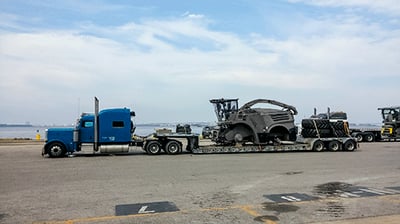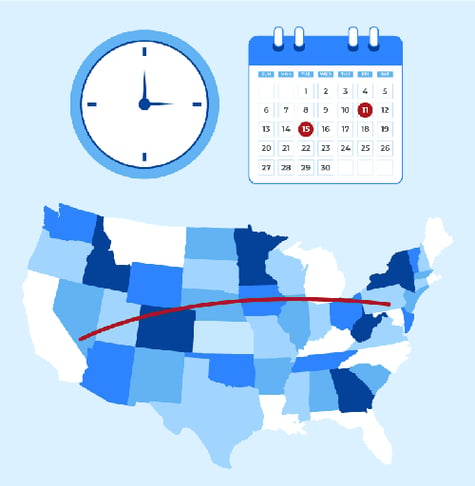Wouldn’t it be nice to know exactly what your freight prices are going to be to ship from point A to point B, every time? If only it were that simple. Let’s break down why the answer to “how much will this cost?” is almost always, “it depends.”
The Simple Rule of Supply and Demand
The biggest impact on your line-haul rate is supply and demand in the transportation market. The amount of freight that needs to be moved versus the amount of capacity available will make a difference to your freight costs no matter where you are.
If there is an influx of freight coming out of a certain region and not enough trucks to cover that freight, the average freight costs go up. Right now, there are some areas that have 700-800 loads for every truck available. The opposite can happen too, like this past April and May, when there were more trucks available than freight, so rates were very low.

A common reason for this is seasonal demand, like fall harvest or Christmas trees coming out of the Pacific Northwest, which will see increased rates in order to get things shipped on time. But other factors, like a global pandemic, can play a part too. Those freight rates trickle out of the regions to the rest of the freight market too, which is why you might deal with the side effects even if you aren’t in the directly impacted areas.
The Devil is in the Details
 Beyond supply and demand, the details of the load make a difference too. That includes length of haul, shipping dates and load/offload times. While you will, of course, pay more for longer hauls, the rate per mile is usually lower. What it ultimately comes down to is the fact that Drivers don’t make money unless they’re moving. For example, if a Driver picks up a load on a Friday that only needs to go 400 miles, but doesn’t unload until a Monday, they’ll be sitting all weekend. That usually leads to additional layover charges so a Driver gets some compensation for waiting.
Beyond supply and demand, the details of the load make a difference too. That includes length of haul, shipping dates and load/offload times. While you will, of course, pay more for longer hauls, the rate per mile is usually lower. What it ultimately comes down to is the fact that Drivers don’t make money unless they’re moving. For example, if a Driver picks up a load on a Friday that only needs to go 400 miles, but doesn’t unload until a Monday, they’ll be sitting all weekend. That usually leads to additional layover charges so a Driver gets some compensation for waiting.
Lead time can also play a part in cost. If you give your transportation provider advance notice, they have the ability to preschedule the transportation at a lower cost and get it to the pickup destination on time. However, if the transportation provider gets less than a 12-hour notice, that usually comes at a premium so they can re-maneuver the right truck to get to your pickup location.
Other Factors You May Not Have Considered
Another potential cost to consider are the requests beyond typical assessorial requirements, like blocking and bracing, job site deliveries, after-hours deliveries and driver-assist loads, among other things. There are also special requirements like Uniform Intermodal Interchange and Facilities Access Agreements (UIIA), Transportation Worker Identification Credential (TWIC) cards, traveling in bond and more.

Finally, weather plays a role in your shipping freight rates, from the obvious natural disasters — both before they arrive and after they’ve left the damage — to things as simple as winter weather in the northern parts of North America. Drivers may not want to go to those places, which may drive up freight rates for those willing to make those journeys.
How to Take Control of Your Line-Haul Rates
Unfortunately, some things — like weather and the overall supply and demand — are out of your control. But what you can control are things like lead time and delivery windows. Let’s go back to that Friday pickup and Monday delivery example from earlier. If you could make it a Monday pickup and Monday or Tuesday delivery, the Driver wouldn’t have to sit all weekend, saving you quite a bit of money. Simply adding a little bit of flexibility in those areas could lead to significant cost savings.
If that’s not an option and you often deal with last-minute lead times and tight delivery windows, it can help to partner with a well-established freight brokerage. Those brokerages should have high quality relationships with tens of thousands of trusted carriers. That allows a back and forth relationship between the carriers and the logistics provider that acts a lot like a friendship, where they’ll help you out if you help them out. Those relationships benefit you, as the shipper, in the end.


